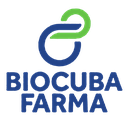Executive Secretary

9th International Scientific Conference on Agricultural Development and Sustainability
10th Symposium of Veterinary Medicine and Zootechnics
Abstract
It was carried out an experiment in 37 females, to orchestrate a new surgical variant of castration in cow’s low producers, to increase their production of milk and meat. The investigation uses qualitative and experimental methods; and four subgroups was studied, young cows not castrated (JNC), castrated (JC) youths, you vacate old not castrated (VNC) and old castrated (VC). The castration was satisfactory, with a smaller dieresis; and the use of the clip portaobjetos, fomented the mechanical anesthesia, the hemostasis, and the sure ovariectomía. The ovaries of JC and VC, were in oestrus. There was association among body condition score (CB) and ovarian condition with relationship of significant prevalence (p=0047). Relative handling norms were not verified to the castration of the cow. The milk yield (PL), increased in JC in 0,76 L and in VC in 0,81 L. A day 180: there was significant increase (p=0000) in PL and CB, of JC and VC vs JNC and VNC, and significant decrease (p=0000) of PL in JNC and VNC. The physical chemical analysis of the milk showed significant increment (p=0023) for the fat in JC and VC vs JNC and VNC. The alive weight increased significantly (p=0000) in JC and VC, and it diminished significantly (p=0019) in JNC and VNC; in JC it increased 48,3 kg and 42,9 kg in VC. The new variant was effective, innovative and economic; deriving productive advantages of economic positive impact and social relevancy. Recommending you to reply the study to establish regulations and norms rationally for their application.
Resumen
Se
realizó un experimento en 37 hembras, para instrumentar una nueva variante quirúrgica de castración en vacas bajas
productoras, para incrementar su producción de leche y carne. La investigación empleo métodos cualitativos
y experimentales; y se estudiaron cuatro subgrupos, vacas jóvenes no
castradas (JNC), jóvenes castradas (JC), vacas viejas no castradas (VNC) y
viejas castradas (VC). La castración fue satisfactoria, con una diéresis menor; y el uso de la pinza
portaobjetos, fomentó la anestesia mecánica, la hemostasia, y la ovariectomía
segura. Los ovarios de las JC y
VC, estaban en anestro. Hubo asociación entre condición corporal (CC) y ovárica
con relación de prevalencia significativa (p=0,047). No se constataron normas
de manejo relativas a la castración de la vaca. La producción de leche (PL), aumentó en las JC
en 0,76 L y en las VC en 0,81 L. Al día
180: hubo aumento significativo (p=0,000) en PL y CC, de JC y VC vs JNC y VNC, y disminución significativa
(p=0,000) de PL en las JNC y VNC. El análisis físico químico de la leche mostró
incremento significativo (p=0,023) para la grasa en JC y VC vs JNC y VNC. El
peso vivo aumentó significativamente (p=0,000) en JC y VC, y disminuyó
significativamente (p=0,019) en JNC y VNC; en las JC aumentó 48,3 kg y 42,9 kg
en las VC. La nueva variante fue eficaz, innovadora y económica;
derivando ventajas productivas de impacto económico positivo y pertinencia
social. Recomendándose replicar el estudio para establecer racionalmente
regulaciones y normas para su aplicación.
About The Speaker

Yuleydy Collazo García

Discussion

